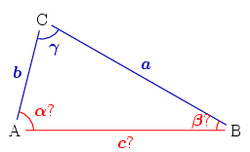Results 1 to 10 of 26
Hybrid View
-
07-06-2015, 02:14 PM #1Senior Member

- Join Date
- Feb 2015
- Location
- Florida
- Posts
- 507
Thanked: 49
-
07-06-2015, 06:15 PM #2
-
07-06-2015, 08:32 PM #3Senior Member

- Join Date
- Feb 2015
- Location
- Florida
- Posts
- 507
Thanked: 49
With the Isosceles triangle as you starting point, all three angles are 60 degrees, Divide by the long ratio. 60 divided by 4 equals 15. Not exact science as the angle of each side would actually be slightly more that 8 for a total included angle of like 16.1 on the 1 to 4 ratio but fairly close. Gives you a tiny bit of wiggle room, Like i said. math for liberal arts majors kind of like the "3 pennies tall" sharpening angle for full width chefs knives.

Last edited by JDM61; 07-06-2015 at 08:42 PM.
-
07-06-2015, 09:39 PM #4

A 1 to 4 ratio is actually 14.36* inclusive.
I/2 thickness/hyp > A-sin x2
-
07-06-2015, 10:13 PM #5
-
07-07-2015, 02:25 AM #6
-
07-07-2015, 04:18 AM #7Senior Member

- Join Date
- Feb 2015
- Location
- Florida
- Posts
- 507
Thanked: 49
You lost me as my only extensive exposure radians was milliradians when trying to get a rough idea of where an artillery shell might fall and even then, we couldn't say the entire word. Just mils.
 But what happens if you use that "formula" on any of the common 8th widths? 6/8 with a 3/16th spine width should give you pretty much the same result, right? Slightly "scientific" than trying to decide which coins to use and how many when figuring out the angle to use to sharpen your new Shun.
But what happens if you use that "formula" on any of the common 8th widths? 6/8 with a 3/16th spine width should give you pretty much the same result, right? Slightly "scientific" than trying to decide which coins to use and how many when figuring out the angle to use to sharpen your new Shun. 
Last edited by JDM61; 07-07-2015 at 04:21 AM.


 9Likes
9Likes LinkBack URL
LinkBack URL About LinkBacks
About LinkBacks

 ) our bevel angle.
) our bevel angle.







 Reply With Quote
Reply With Quote


